Understanding the Basics of Copyright Law in India and its Various Facets
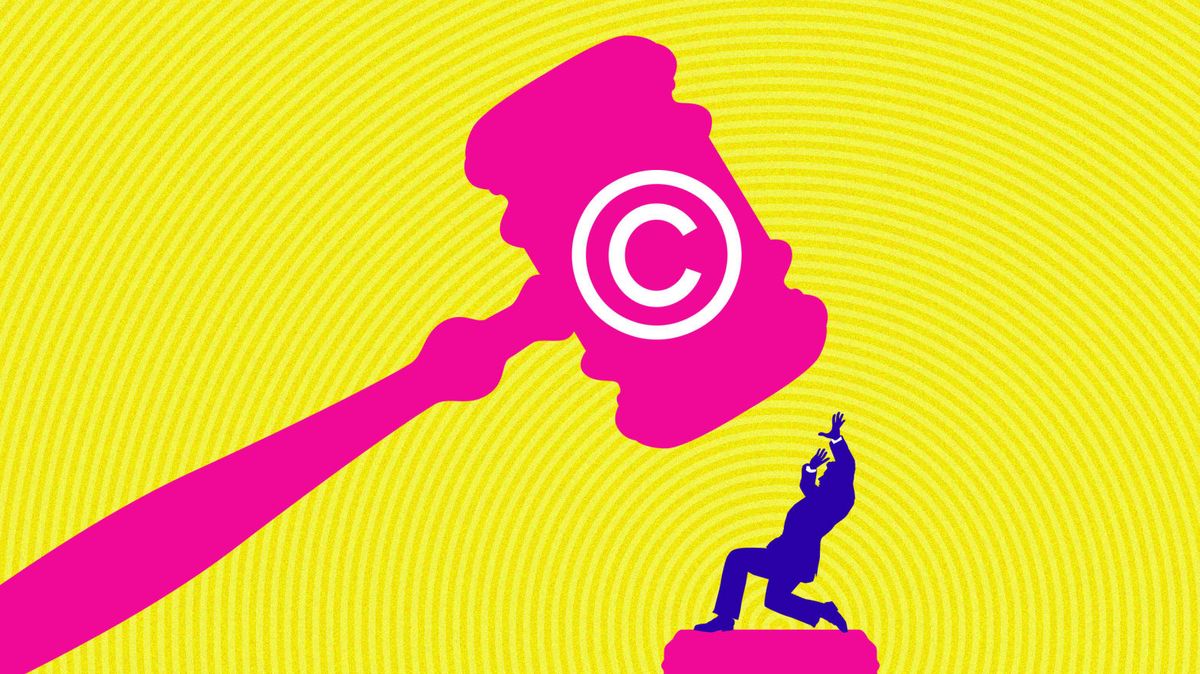
Copyright laws, as they stand in India today, lean towards the first world partiality for protecting private interest over the promotion of social welfare. This partiality cannot be reconciled with the constitutional position in India, because information in this society has attained the status of a primary good. Section 14 of the Copyright Act, 1957 gives us the definition of Copyright. Copyright in a layman's language would mean the exclusive rights or a form of legal protection automatically provided to the creator of an original work. This article will work as a basic part of my upcoming article which would cover the copyright law in the music industry and hence I would keep this one as an introductory article discussing about the evolution of Copyright Law in India, registration of Copyright and need for the registration of Copyright, and duration of a copyright and as a bonus I would lastly discuss two interesting case laws from 2019 pertaining to Copyright Law in India.
Definitions of Copyright
The World International Property Organisation defines Copyright (or author’s right) as a legal term used to describe the rights that creators have over their literary and artistic works. Works covered by copyright range from books, music, paintings, sculpture, and films, to computer programs, databases, advertisements, maps, and technical drawings [1].
According to the Merrim Webster Dictionary, Copyright is the exclusive legal right to reproduce, publish, sell, or distribute the matter and form of something (such as a literary, musical, or artistic work)[2].
The definition of copyright changes with the invention of any new original work which is exclusive in nature. The comprehensive definition of copyright in India can be traced under section 14 of the Copyright Act, 1957 - “copyright” means the exclusive right subject to the provisions of this Act, to do or authorise the doing of any of the following acts in respect of a work or any substantial part thereof, namely:—"
(a) In the case of a literary, dramatic or musical work, not being a computer programme,—
(i) to reproduce the work in any material form including the storing of it in any medium by electronic means;
(ii) to issue copies of the work to the public not being copies already in circulation;
(iii) to perform the work in public, or communicate it to the public;
(iv) to make any cinematograph film or sound recording in respect of the work;
(v) to make any translation of the work;
(vi) to make any adaptation of the work;
(vii) to do, in relation to a translation or an adaptation of the work, any of the acts specified in relation to the work in sub-clauses (i) to (vi);
(b) in the case of a computer programme,—
(i) to do any of the acts specified in clause (a); 2[(ii) to sell or give on commercial rental or offer for sale or for commercial rental any copy of the computer programme: 2[(ii) to sell or give on commercial rental or offer for sale or for commercial rental any copy of the computer programme\:" Provided that such commercial rental does not apply in respect of computer programmes where the programme itself is not the essential object of the rental.]
(c) in the case of an artistic work,—
(i) to reproduce the work in any material form including depiction in three dimensions of a two dimensional work or in two dimensions of a three dimensional work;
(ii) to communicate the work to the public;
(iii) to issue copies of the work to the public not being copies already in circulation;
(iv) to include the work in any cinematograph film;
(v) to make any adaptation of the work;
(vi) to do in relation to an adaptation of the work any of the acts specified in relation to the work in sub-clauses (i) to (iv);
(d) in the case of a cinematograph film,—
(i) to make a copy of the film including a photograph of any image forming part thereof;
(ii) to sell or give on hire or offer for sale or hire, any copy of the film, regardless of whether such copy has been sold or given on hire on earlier occasions;
(iii) to communicate the film to the public;
(e) in the case of a sound recording,—
(i) to make any other sound recording embodying it;
(ii) to sell or give on hire, or offer for sale or hire, any copy of the sound recording, regardless of whether such copy has been sold or given on hire on earlier occasions;
(iii) to communicate the sound recording to the public. Explanation.— For the purposes of this section, a copy which has been sold once shall be deemed to be a copy already in circulation.][3]
Brief History on Copyright Law in India
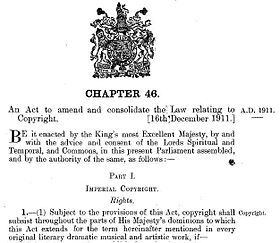
Copyright law entered in India in 1847 through an enactment during the East India Company’s regime. The term copyright was for lifetime of the author plus seven years post-mortem. The act of infringement comprised in a person’s unauthorized printing of a copyright work for sale, hire or exportation or for selling, publishing or exposing to sale or hire. Suit or action for infringement was to be instituted in the highest local court exercising original civil jurisdiction. Unlike today, copyright in a work was not automatic. Registration of copyright with the Home Office was mandatory for the enforcement of rights under the Act. In 1914, the then Indian legislature enacted a new Copyright Act which merely extended most portions of the United Kingdom Copyright Act of 1911 to India. It did, however, make a few minor modifications. First, it introduced criminal sanctions for copyright infringement (sections 7 to 12). Second, it modified the scope of the term of copyright; under section 4 the “sole right” of the author to “produce, reproduce, perform or publish a translation of the work shall subsist only for a period of ten years from the date of the first publication of the work.” The author, however, retained her “sole rights” if within the period of ten years she published or authorized publication of her work a translation in any language in respect of that language. The 1914 Act was continued with minor adaptations and modifications till the 1957 Act was brought into force on 24th January, 1958.
Need for a Copyright Registration
Copyright comes into existence as soon as a work is created and no formality is required to be completed for acquiring copyright then the main issue which arises here is why is it there a necessity to have an original work registered under Copyright Law? For instance, suppose X wrote a computer coding after working day and night and putting in a lot of sweat and effort into it. He then put it up on his website for others to give a feedback. After a few months, X noticed that someone else had copied it and was making money off it by using his coding to make his own website. Now, because he had copyright, he could use it as an evidence in the court and prove that it is his coding and the infringer must be punished.
Through this illustration, we can observe that registered copyrights protect your work and prevent others from using it to for their own profit. Now let us comprehend some of the needs for having a copyright registered –
- Copyright registration creates a record. It reflects that your work is protected by copyright and also enables a person who wants to license your work to search you.
- It enables you to file a suit and take legal steps against someone who infringes your copyright, say be selling and displaying your artwork in public without your permission.
- It gives you the right to sell or pass on your work for financial purpose.
- It allows you to alter the form of your work.
- It gives you a legal evidence of your ownership.
Procedure of Registering Copyright in India
Step 1: File an Application
The author of the work, copyright claimant, owner of an exclusive right for the work or an authorized agent file an application either physically in the copyrights office or through speed/registered post or through e-filing facility available on the official website (copyright.gov.in). For registration of each work, a separate application must be filed with the registrar along with the particulars of the work. Along with this, the requisite fee must also be given where different types of work have different fees. The various modes of paying includes a demand draft (DD) or Indian postal order (IPO) addressed to the Registrar of Copyright Payable at New Delhi or through e-payment facility. This application must be filed with all the essential documents. At the end of this step, the registrar will issue a dairy number to the applicant.
Step 2: Examination
Here, the examination of the copyright application takes place. Once the dairy number is issued, there is a minimum 30 days waiting period. In this time period, the copyright examiner reviews the application. This waiting period exists so that objections can arise and be reviewed.
- In case no objections are raised, the examiner goes ahead to review and scrutinize the application to find any discrepancy.
- If there is no fault and all the essential documents and information is provided along with the application, it is a case of zero discrepancies. In this case, the applicant is allowed to go forward with the next step.
- In case some discrepancies are found, a letter of discrepancy is sent to the applicant. Based upon his reply, a hearing is conducted by the registrar. Once the discrepancy is resolved, the applicant is allowed to move forward to the next step.
- In case objections are raised by someone against the applicant, letters are sent out to both parties and they are called to be heard by the registrar.
- Upon hearing if the objection is rejected, the application goes ahead for scrutiny and the above-mentioned discrepancy procedure is followed. In case the objection is not clarified or discrepancy is not resolved, the application is rejected and a rejection letter is sent to the applicant. For such applicant, the copyright registration procedure ends here.
Step 3: Registration
The final step in this process can be termed as registration. In this step, the registrar might ask for more documents. Once completely satisfied with the copyright claim made by the applicant, the Registrar of Copyrights would enter the details of the copyright into the register of copyrights and issue a certificate of registration. The process registration of copyright completes when the applicant is issued the Extracts of the Register of Copyrights (ROC).
Term of Protection of Copyright in India
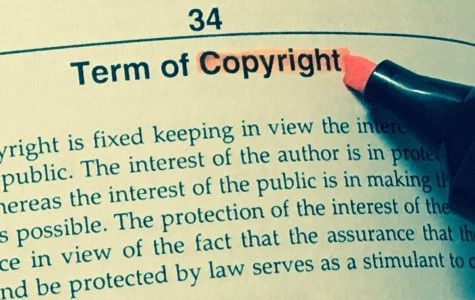
The term of copyright protection is granted for works which varies depending upon the type of work applied to be protected. If for Musical or Literary works other than photographs, copyright protection is granted for a period which extends throughout the lifetime of the author and then extends 60 years from the year in which the author died. But, if the work has neither been published nor performed, during the lifetime of the author, the copyright protection shall continue for a period of 60 years from the end of the year in which any of these acts are done relating to the work.
Few Cases Discussed
Tips Industries v Wynk Music

The dispute revolves around section 31D of the Copyright Act, 1957 which provides for statutory licensing scheme, as whereby any ‘broadcasting organization’ desirous of ‘communicating to the public’ any sound recording, can obtain a statutory license to do so, provided they pay royalty rates to the copyright owners at rates fixed by the Intellectual Property Law Board[4]. Tips Industries Ltd is an Indian music label that exercises copyright over a significant music repository that, in 2016, granted Wynk Music Ltd license to access this music repository. At the expiry of the said license both the parties attempted to renegotiate the licensing conditions but failed to do so and hence Wynk took refuge by invoking Section 31D of the Copyright Act. Tips challenged Wynk’s invocation of Section 31D, and prosecuted Wynk pursuant to Section 14(1)(e) for breach of their exclusive rights of sound recording.
Analysis of the Judgement - After hearing the contentions of both the parties the Bombay High Court came to a conclusion finding Wynk to be guilty of direct infringement on two accounts – To offer the copyrighted work under section 14(1) (e) (ii) which allowed the users to download and listen to the plaintiff’s work offline and under section 14(1) (e) (iii) for communicating the plaintiff’s works to the users via their streaming service. In addition to that the Bombay High Court sought this opportunity to clear out the tussle regarding the ambiguity that existed with respect to online streaming services falling within the scope of Section 31D:
- Under Section 31D of the Copyright Act, ‘Download / Purchase ‘of copyrighted works is not covered. Wynk Music permitted the users to download and store copyrighted music for unlimited future use which instituted to be a ‘sale’ and not ‘communication made to public’ which constitutes as a ‘broadcast’ for the purposes of Section 31D and hence there exists no claim for statutory license for the use of such copyrighted work by Wynk Music.
- The application of Section 31D of the Copyright Act does not include Internet broadcasting. The case of the defendant was based primarily on the presumption that Section 31D covered Internet streaming services under’ radio broadcasting’ as described in a 2016 DPIIT office circular, given that’ radio broadcasting’ included’ internet broadcasting’ under Section 31D.[5]
The judgement was passed in the favour of the plaintiff and the court held that the plaintiff was entitled to interim injunction, having regard to the reality that they had made a prima facie case, would suffer irreparable harm in the way of lost revenue.
YRF v Sri Sai Ganesh Productions

A copyright infringement suit was filed against Sri Sai Ganesh Productions & Ors by Yash Raj Films Pvt Ltd on the grounds that it blatantly copied the movie Band Baja Baarat produced under the YRF banner and producing Jabardasht which showcased substantial and material similarities in terms of theme, concept, plot, character, sketches, story, script, form and expression amongst other things. The issue or the main conflict before the case was whether copyright can subsist in a cinematography film independent of the underlying works that it is comprised of? And whether the expression under section 14 to ‘make a copy of the film’ mean making physical copy of the film only? And between the two films is there a substantial and material similarity?
Judgement - The court while determining the first issue relied on the judgement handed down by the Delhi High Court in the case of MRF Limited v. Metro Tyres Ltd, in which the court held that copyright exists in the ‘cinematographic film’ independent from other underlying works that come together to constitute it and that there is a requirement of originality to exist in ‘cinematographic films’ which can be read into from Section 13(1)(b) of the Copyright Act, 1957 through Sections 13(3)(a) and 2(d) of the said Act even though it has not been explicitly mentioned. The court while determining the second issue held that the expression ‘to make a copy of the film’ provided in Section 14(d)(i) of the said Act does not simply mean creating a physical copy of the film by process of duplication. Furthermore, as the films are protected just like original works, the court extended the test of originality set out in the case of R.G Anand v. Deluxe Films to distinguish between the two films on the basis of ‘substance, foundation and kernal’ and understand the viewpoint of an average moviegoer as to whether they would have an unmistakable impression that one work was a copy of the other. In the instant case the court found that the defendants had blatantly copied the fundamental, essential and distinctive features of the plaintiff’s film. [6]
Conclusion
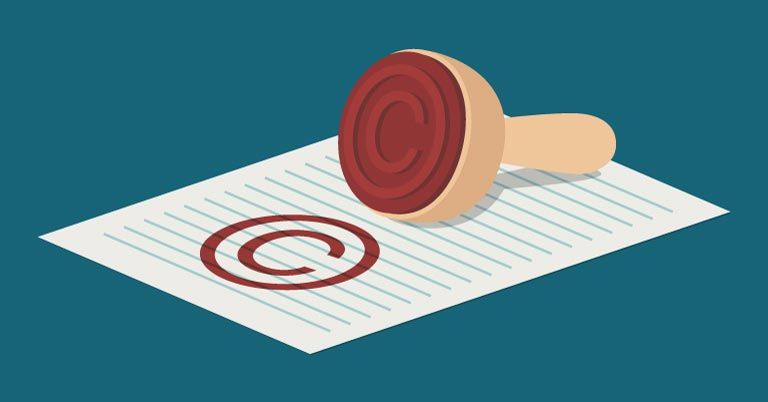
Creativity is an exceptional element to enable progress in a society. Encouraging creativity enables economic and social development of a society. Copyright protects the creativity of people and becomes a source of motivation for the artists, authors, etc. Registering your work with the Registrar of Copyrights provides you with the right to reproduce it, the right to adapt the work, right to paternity and right to distribute the work. To provide adequate protection to copyright holders, the Copyright Act, 1957 provides imprisonment from six months to three years and a fine of not less than INR 50,000 in case your right is infringed by someone.
[1] https://www.wipo.int/copyright/en/.
[2] https://www.merriam-webster.com/dictionary/copyright
[3]The Copyright Act, 1957, Sec.14.
[4]The Copyright Act, 1957, sec.31D.
[5]Notice of Motion (L) No. 197 of 2018 IN Commercial Suit IP (L) No. 114 of 2018, decided on 23-04-2019.
[6]YRF v. Sri Sai Ganesh Productions, in the high court of delhi at new delhi +cs(comm) 1329/2016, Date of Decision: 08th July, 2019.
SPECIAL REFERENCE
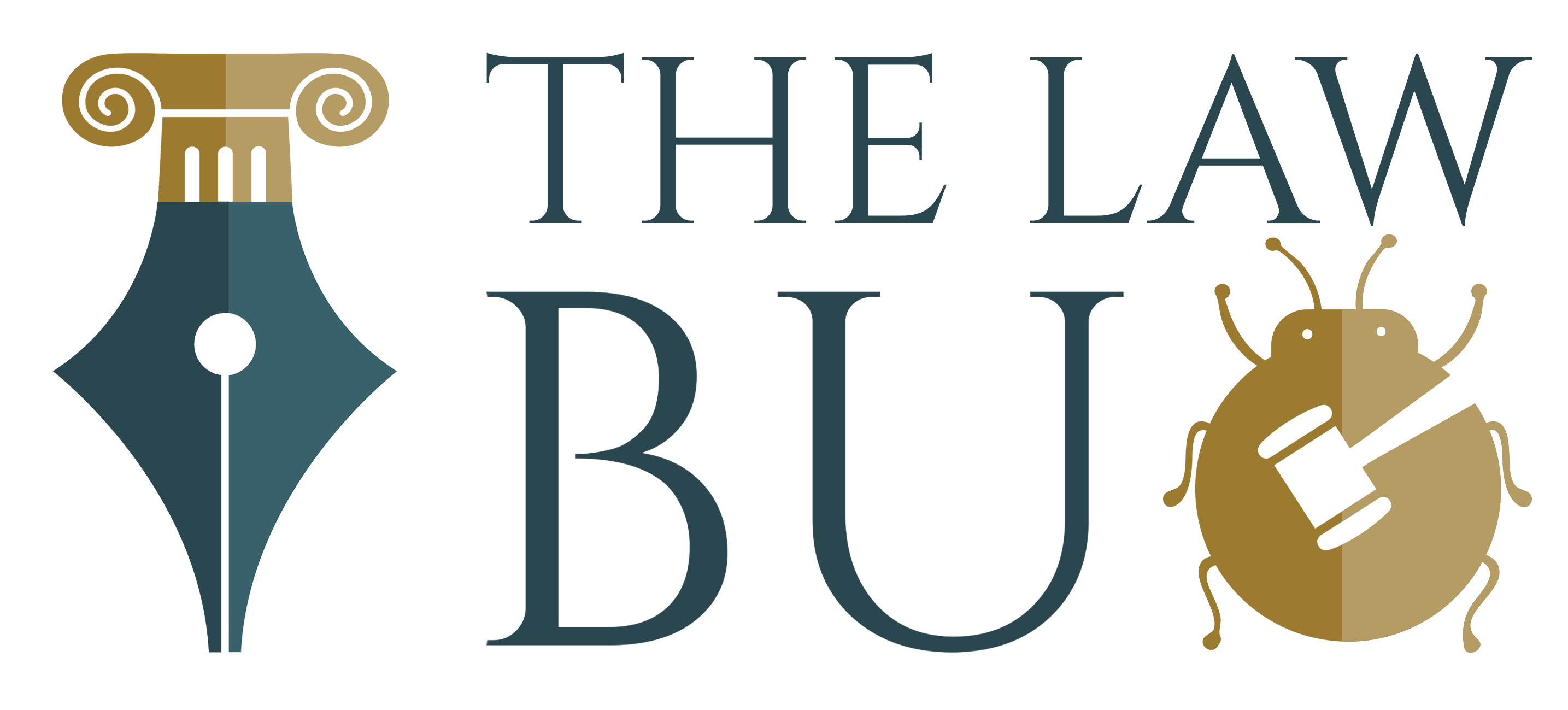
Comments ()